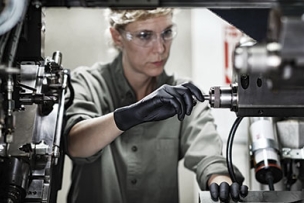Ansell is a global supplier of personal protection (PPE) equipment solutions designed for workers in a wide range of industries. Ansell's customers include businesses engaged in the Manufacturing, Agriculture, Healthcare and Scientific sectors, as well as many other business sectors. Ansell has developed a global presence that includes sales, operations and manufacturing sites in North America, Latin America, Europe and Asia and employs more than 15,000 people worldwide. Ansell's position as a market leader has evolved over more than 100 years of history and can be attributed to our history of providing innovative protection solutions to workers through a deep understanding of the worker experience.
When it comes to workplace injuries, cuts and lacerations continue to be a frequent issue, posing a major risk to both workers and employers. Statistics on workplace injuries indicate that on average, cuts and lacerations resulted in six lost working days for the injured worker and cost employers an average of $22,000 per incident[i]. This data points to hand injuries due to cuts or lacerations being the most common, and most costly, of all workplace injuries.
[i] Data based upon Ansell B2B research study 2015








Talk to Us!
Leave a reply
Your email address will not be published. Required fields are marked *